Plataforma de Publicación de Videos en Línea
Ofrezca a sus espectadores una experiencia superior.
La plataforma de video en línea completa de Dacast simplifica el alojamiento, la transcodificación, la monetización y la entrega de sus contenidos de video en vivo y a la carta. Ofrezca experiencias superiores a cada destino y dispositivo.
Iniciar Prueba Gratuita
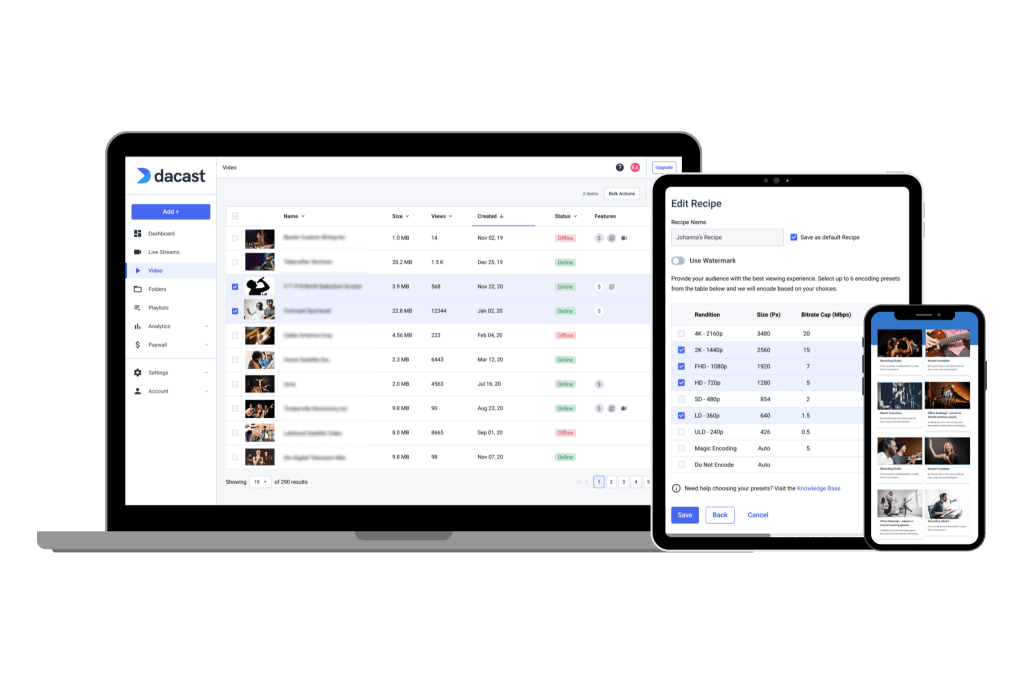
Alojamiento de Videos en Línea
Organice y Gestione Sus Videos con Nuestro CMS.
Nuestro contrato con los servicios de CDN con sede en China garantiza una entrega rápida y sin almacenamiento en búfer, lo que permite el alojamiento de video bajo demanda en China con sólo unos pocos clics. Con múltiples puntos de presencia (PoP) en toda la China continental, se obtiene acceso a 1.402 millones de personas detrás del Great Firewall.Explorar el Alojamiento
Alto Rendimiento con CDNs de Primer Nivel
Consiga una transmisión 24/7 sin costo adicional.
Transmita video en vivo 24/7 a través de socios CDN de primer nivel. Llegue a sus espectadores en todas partes, en cualquier dispositivo, y escale al instante.Más Información

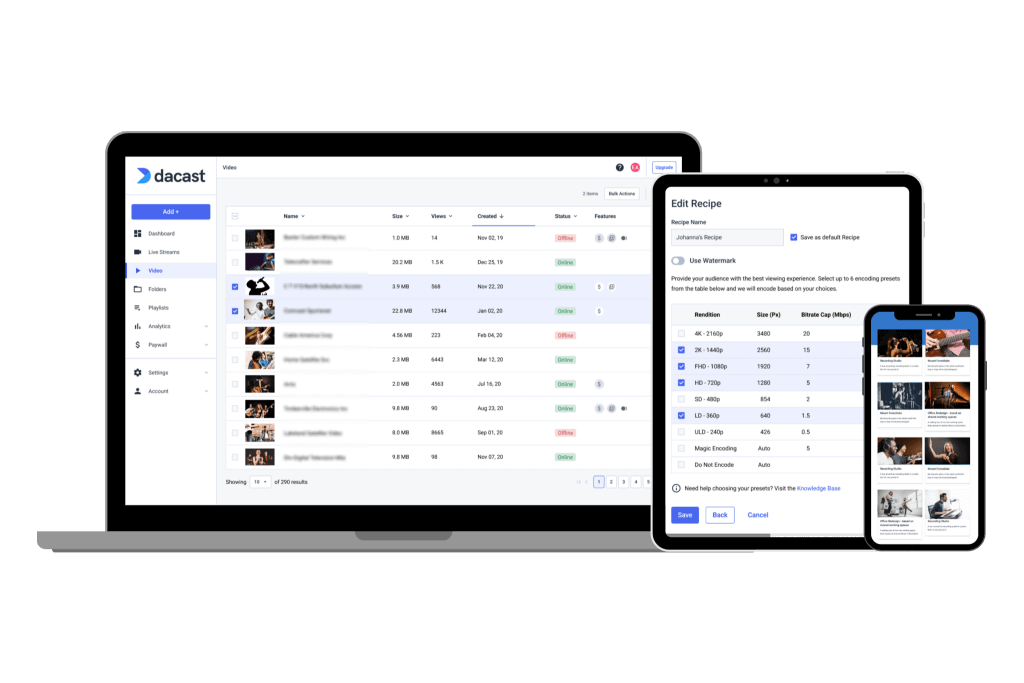

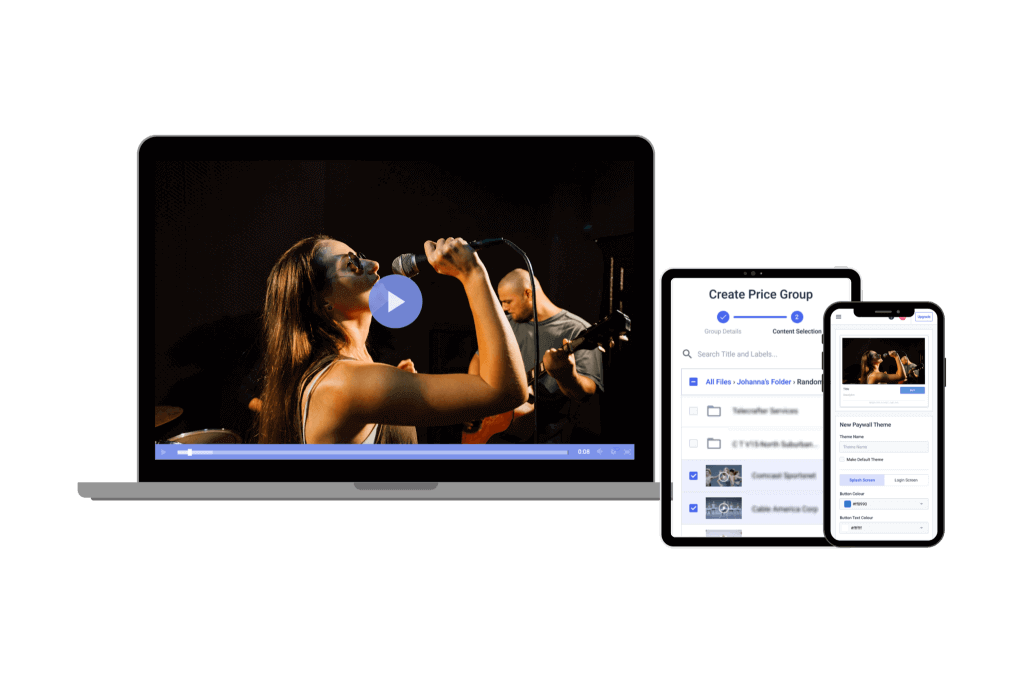
Herramientas Potentes de Monetización de Video
Maximice sus Ingresos.
Proporcione flujos de video OTT programados con suscripciones recurrentes. Cree experiencias publicitarias en video que se adapten a su audiencia y a sus objetivos empresariales con anuncios previos, intermedios y posteriores.Monetizar el Video
Sistema de Gestión de Contenidos de Video
Gestione su videoteca con facilidad.
Cargue, transcodifique, aloje y entregue toda su videoteca gracias a nuestras soluciones de alojamiento de video fáciles de usar. Acceda a su plataforma de publicación de videos en línea a cualquier dispositivo.Estoy Interesado

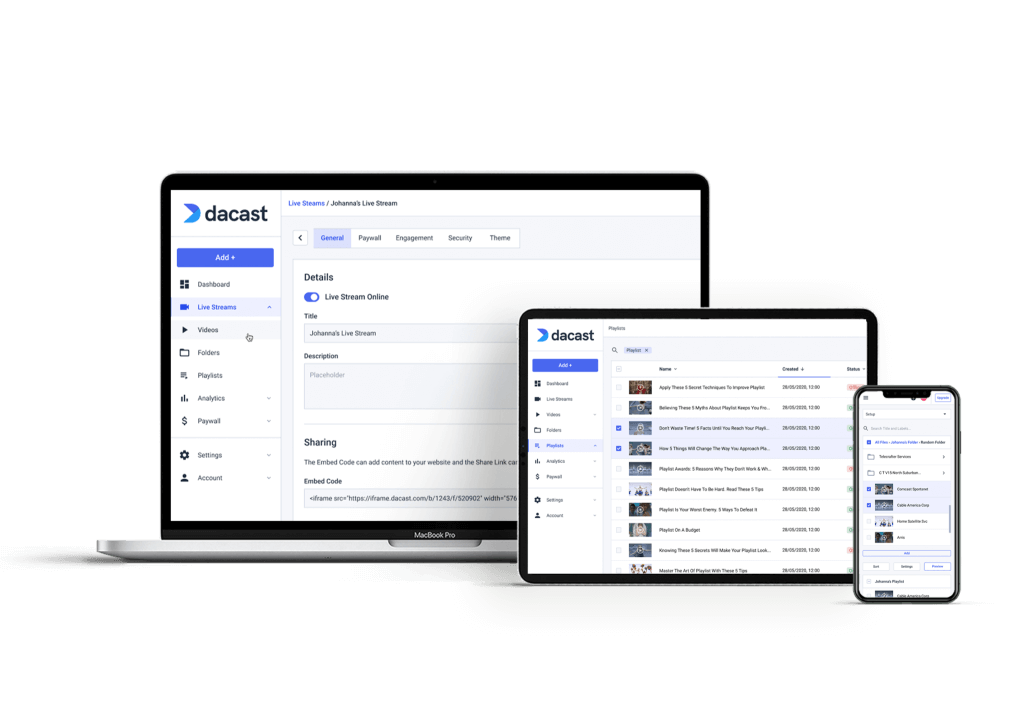


Galería de Videos de la Expo
Cree una Muestra de Video con su Marca.
Muestre su biblioteca OTT en una galería de video envolvente y personalice la página de destino para reflejar su marca. Con Expo, puede crear rápidamente una galería profesional de tipo web para los contenidos destacados. Cree un número ilimitado de Expos para mostrar diferentes listas de reproducción de contenidos que se adapten a las necesidades de su audiencia. Monetice su galería con la integración de anuncios o con nuestro muro de pago seguro.Empezar
Video API
Personalice su CMS de video.
Las APIs de video y de reproductores de Dacast habilitan su negocio con video, mejoran sus aplicaciones móviles y le permiten construir su propio sistema de gestión de contenidos. Utilice la API de video para programar manualmente su plataforma de video. Tome el control de todos los aspectos de su reproductor de video y contenido.Más Información

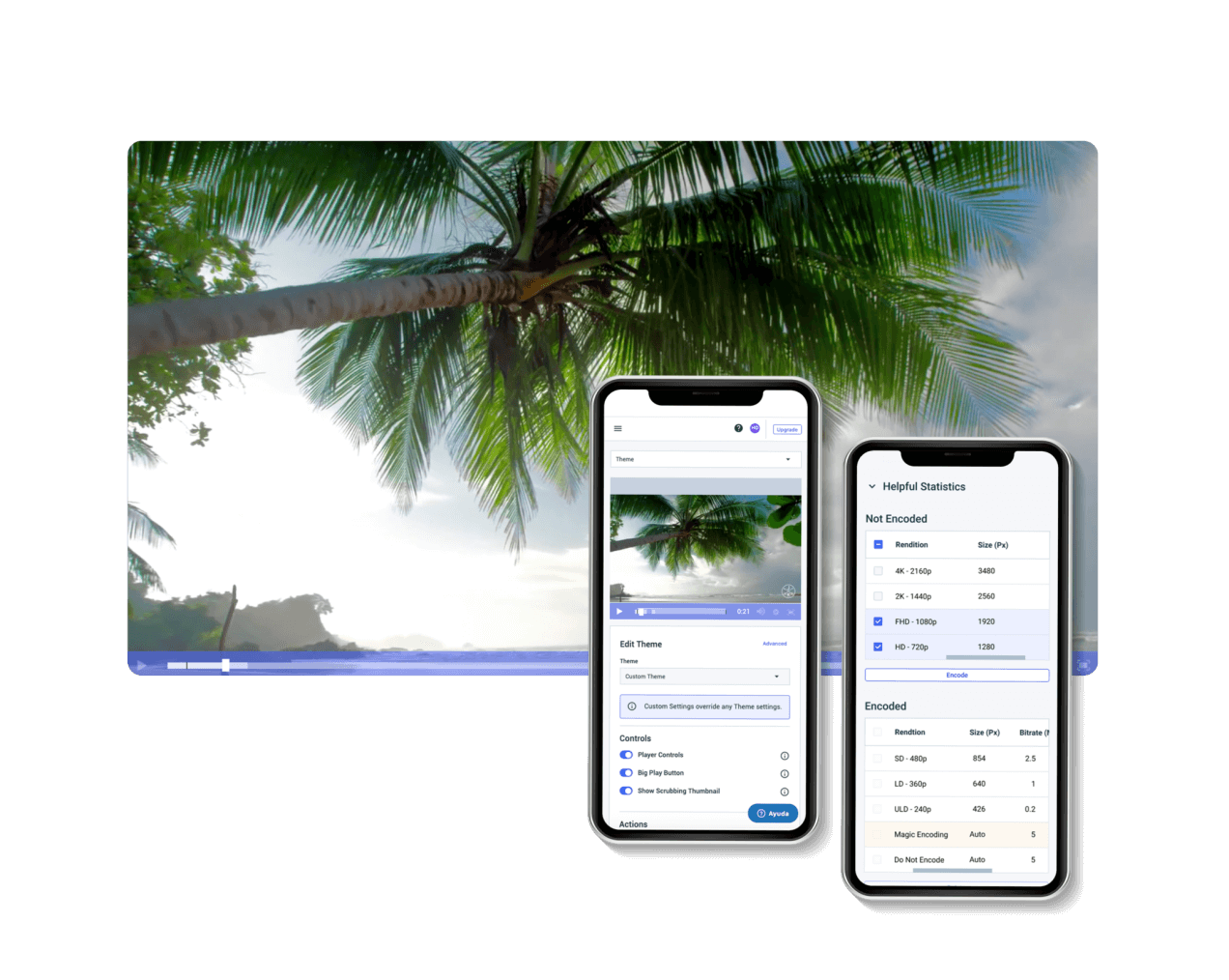
Funciones Potentes de Transmisión
Mejore Su Experiencia de Usuario


Flujo
Programador de Listas de Reproducción
Programe una experiencia similar a la de la televisión con sus contenidos de video y anuncios en rotación 24/7.


Captura
Análisis en Tiempo Real
Siga y optimice el rendimiento de sus contenidos de video en tiempo real.


Interacción
Videos con Marca
Personalice el aspecto y el campo del reproductor para que coincida con su marca e impulse el conocimiento de la misma.
“El soporte que ofrece Dacast es especialmente bueno en comparación con otros proveedores de transmisión, lo que les convierte en una clara elección para mi negocio.”
CEO de ComeSee TV
Soporte Técnico 24/7
La ayuda confiable que necesita, cuando la necesita
Nuestro equipo de atención al cliente está aquí 24/7 para ayudarle a sacar el máximo partido a su solución de transmisión. Acceda a una completa base de conocimientos y a una dinámica comunidad online de profesionales.
SoporteFunciones más Populares de Dacast


Transmisión Móvil
Transmita en Vivo a Teléfonos Inteligentes
Nuestro reproductor de video HTML5 garantiza la compatibilidad con los dispositivos y navegadores modernos. No se requiere ninguna configuración, ya sea en un smartphone o en una smart TV.


Plataforma de Marca Blanca
Su Logotipo, Su Marca
Personalice nuestro reproductor de video con su logotipo y sus colores para poner su marca en primer plano. El aspecto de su contenido depende completamente de usted.


Alta Definición
Transmisión en Calidad Full HD
Ofrezca video de calidad impecable hasta una resolución Full HD de 1080p. Aproveche la tecnología multi bitrate para garantizar que cada espectador tenga una experiencia óptima.
Transmisión en HD

OVP Basado en la API
Construya Nuevas Aplicaciones
Acceda a las funciones e intégrelas en su propio flujo de trabajo de medios digitales. Construya su propia plataforma de video OTT utilizando nuestras API RESTful, o aplicaciones móviles con nuestros SDK de iOS y Android.
Explorar la API de Video

Carga Segura de Videos
Gestione su videoteca
Cargue de manera masiva su video y añada la capa de seguridad que desee. Acceda a más herramientas de carga y seguridad de videos a través de nuestra avanzada plataforma de alojamiento de videos.


Transcodificación de Video
Codifique Archivos de Video
Utilice nuestros servicios de transcodificación para ofrecer a sus espectadores la calidad de video que necesitan en cualquier dispositivo.
Los Mejores Precios de Transmisión
Con muchas funciones y competitivo en cuanto a costos
Dacast es la única plataforma de video que ofrece funciones de transmisión en vivo y alojamiento de video de alto rendimiento a los mejores precios del mercado.
Compruébelo6 Razones para Elegir Dacast
Plataforma de Transmisión y Alojamiento de Video en Vivo

